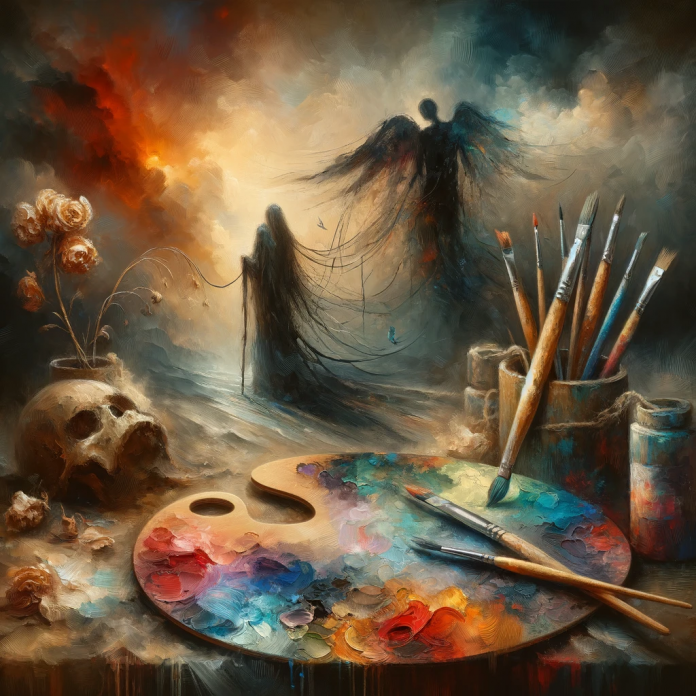Art has always been a powerful medium for expressing complex emotions and experiences. One of the most profound human experiences is grief, a universal emotion that transcends cultures and time. This article delves into the intricate relationship between grief and the visual arts, specifically focusing on painting as a means of expressing loss.
The Intersection of Grief and Art
Art, in its many forms, has long been a means of expressing and processing complex emotions. Grief, in particular, has found a profound expression through the visual arts. The act of painting, with its tactile and immersive nature, provides a unique platform for individuals to channel their feelings of loss and sorrow.
Historically, artists have used their craft to navigate their personal grief. The resulting artworks often serve as tangible manifestations of their emotional journey, providing insight into the human experience of loss. These works of art not only help the artist to process their grief but also offer solace and understanding to viewers who may be experiencing similar emotions.
Art as a Therapeutic Tool
Art therapy is a recognized form of psychotherapy that uses the creative process of making art to improve a person's physical, mental, and emotional well-being. The therapeutic potential of art, particularly painting, in dealing with grief cannot be overstated.
Painting allows individuals to externalize their grief, giving form to their feelings and experiences. This process can help individuals to confront and understand their emotions, facilitating healing and acceptance.
Exploring Grief Through Historical Artworks
Throughout history, many artists have grappled with the theme of grief in their work. These artworks not only reflect the personal experiences of the artists but also provide a historical and cultural context for understanding grief.
From the poignant mourning scenes in ancient Greek pottery to the somber depictions of loss in the works of modern artists, the theme of grief has been a recurring motif in the visual arts. These historical artworks offer a rich tapestry of human emotion, revealing the universal nature of grief and loss.
Edvard Munch's 'The Scream'
One of the most iconic paintings dealing with emotional turmoil is Edvard Munch's 'The Scream'. The painting, with its haunting image of a figure gripped by despair against a backdrop of swirling colors, encapsulates the artist's personal anguish and anxiety.
The intense emotion conveyed in 'The Scream' resonates with viewers, reflecting the universal human experience of emotional pain and loss. Munch's painting serves as a powerful testament to the cathartic potential of art in expressing and processing grief.
Contemporary Expressions of Grief in Painting
In contemporary art, the exploration of grief continues to be a significant theme. Many modern artists use painting as a means to express their personal experiences of loss, creating works that resonate with viewers and contribute to the broader discourse on grief and mourning.
These contemporary expressions of grief in painting often challenge traditional representations of loss, offering new perspectives and insights into the experience of grief. They serve as poignant reminders of the enduring power of art to capture and communicate the complexity of human emotion.
Käthe Kollwitz's 'Grieving Parents'
Käthe Kollwitz, a German artist known for her powerful depictions of human suffering and loss, created the sculpture 'Grieving Parents' in response to the death of her son during World War I. The sculpture depicts the artist and her husband in a state of profound grief, their faces etched with sorrow.
'Grieving Parents' is a moving testament to the pain of losing a child, a universal experience of grief that transcends cultural and temporal boundaries. Kollwitz's sculpture underscores the therapeutic potential of art in expressing and processing grief.
Conclusion
The intersection of grief and the visual arts, particularly painting, offers a rich and complex exploration of human emotion. From historical to contemporary artworks, the theme of grief has been a recurring motif, reflecting the universal human experience of loss.
Art, with its capacity to capture and communicate the complexity of human emotion, serves as a powerful tool for expressing and processing grief. Whether as a form of personal catharsis or as a means of connecting with others, painting offers a unique platform for navigating the intricate landscape of grief and loss.


-banner.png)





